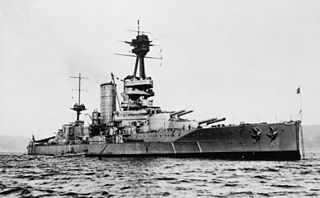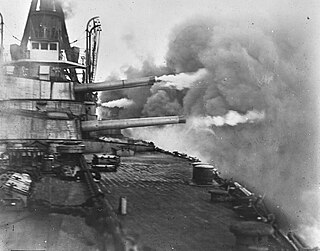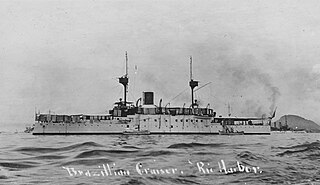
The New Orleans class of protected cruisers of the United States Navy consisted of two ships which were building for the Brazilian Navy at Elswick, near Newcastle Upon Tyne, England, by Armstrong Whitworth. The Brazilian Navy had ordered four Elswick cruisers, but had already sold the first ship during construction to Chile as Ministro Zenteno. One ship was delivered to Brazil, named Almirante Barroso. The third ship was fitting out as Amazonas, and the fourth was on order as Almirante Abreu.

The Kresta I class, Soviet designation Project 1134 Berkut, was a class of guided missile cruiser built in the Soviet Union for the Soviet Navy. The ships were designed for a surface warfare role, but Soviet priorities were changed to an anti-submarine role and only four ships were built in this configuration. They were followed by the Kresta II class, an anti-submarine warfare variant.

The Tre Kronor class was a class of two cruisers built for the Swedish Navy during World War II, comprising Tre Kronor and Göta Lejon. Tre Kronor was discarded in 1968 and Göta Lejon was sold to Chile in 1971. Renamed Almirante Latorre, she remained in service until being discarded in 1986.

The Kasuga-class cruiser was a class of two armored cruisers of the Imperial Japanese Navy (IJN) based on the Giuseppe Garibaldi-class cruisers developed by Italy at the end of the 19th century.

Almaz was a 2nd-class cruiser in the Imperial Russian Navy, built by Baltic Shipyard in Saint Petersburg, Russia, as a yacht for Viceroy Yevgeni Alekseyev.
The Standard-type battleship was a series of thirteen battleships across five classes ordered for the United States Navy between 1911 and 1916 and commissioned between 1916 and 1923. These were considered super-dreadnoughts, with the ships of the final two classes incorporating many lessons from the Battle of Jutland.

The Bahia class was a pair of scout cruisers built for Brazil by Armstrong Whitworth in the United Kingdom, based on a design that borrowed heavily from the British Adventure-class scout cruisers. The class comprised the lead ship Bahia and her sister Rio Grande do Sul, along with a canceled third ship, Ceara. Both were named after states of Brazil. As a class, they were the fastest cruisers in the world when commissioned, and the first in the Brazilian Navy to use steam turbines for propulsion.

Almirante Latorre, named after Juan José Latorre, was a super-dreadnought battleship built for the Chilean Navy. It was the first of a planned two-ship class that would respond to earlier warship purchases by other South American countries. Construction began at Elswick, Newcastle upon Tyne soon after the ship was ordered in November 1911, and was approaching completion when it was bought by the United Kingdom's Royal Navy for use in the First World War. Commissioned in September 1915, it served in the Grand Fleet as HMS Canada for the duration of the war and saw action during the Battle of Jutland.

The Almirante Latorre class consisted of two super-dreadnought battleships designed by the British company Armstrong Whitworth for the Chilean Navy. They were intended to be Chile's entries to the South American dreadnought race, but both were purchased by the Royal Navy prior to completion for use in the First World War. Only one, Almirante Latorre (HMS Canada), was finished as a battleship; Almirante Cochrane (HMS Eagle), was converted to an aircraft carrier. Under their Chilean names, they honored Admirals (Almirantes) Juan José Latorre and Thomas Cochrane; they took their British names from what was then a dominion of Canada and a traditional ship name in the Royal Navy.

ARA Almirante Brown was a central battery ironclad of the Argentine Navy built in the 1880s by Samuda Brothers in London. Almirante Brown displaced 4,200 long tons (4,300 t) and had a top speed of 14 knots. The ship was protected by a belt of nine-inch (230 mm) steel-faced armor and she carried a main battery of eight breech-loading guns. She was among the first major warships in the world to use steel armor, and remained the largest vessel in the Argentine fleet for over 15 years. Almirante Brown had a peaceful career in the fleet during the 1880s and 1890s. By the 1920s, she was reduced to a coastal defense ship, and remained in service until the early 1930s. She was stricken from the naval register in November 1932 and sold for scrapping.

A naval arms race among Argentina, Brazil and Chile—the wealthiest and most powerful countries in South America—began in the early twentieth century when the Brazilian government ordered three dreadnoughts, formidable battleships whose capabilities far outstripped older vessels in the world's navies.

Rio Grande do Sul was a Bahia-class cruiser built for the Brazilian Navy in 1909–10.

In the late nineteenth and early twentieth centuries, the South American nations of Argentina and Chile engaged in an expensive naval arms race to ensure the other would not gain supremacy in the Southern Cone.

Ministro Zenteno was a protected cruiser of the Chilean Navy.

The Brown-class destroyer is a class of destroyers of the Argentine Navy. Five ships of the Fletcher class were lent by the United States Navy and were in commission from 1961 until 1982.

A torpedo cruiser is a type of warship that is armed primarily with torpedoes. The major navies began building torpedo cruisers shortly after the invention of the locomotive Whitehead torpedo in the 1860s. The development of the torpedo gave rise to the Jeune École doctrine, which held that small warships armed with torpedoes could effectively and cheaply defeat much larger battleships. Torpedo cruisers fell out of favor in most of the great power navies in the 1890s, though many other navies continued to acquire them into the early 1900s.
At least three ships of the Imperial Russian Navy, Soviet Navy, or Russian Navy have been named Alexander Nevsky after the Russian saint Alexander Nevsky.

Deodoro, also known as Marshal Deodoro, was a coastal defense ship built for the Brazilian Navy at the end of the nineteenth century. It was the lead ship of its class, alongside Floriano. Deodoro was one of several ships to rebel in the 1910 Revolt of the Lash, and it was used for neutrality patrols during the First World War. It was sold to Mexico in 1924, and broken up for scrap in 1938.

Tamoio was a torpedo cruiser operated by the Brazilian Navy, belonging to the Tupi class along with Tupi and Tymbira. The vessel was one of three from the so-called "White Division", on a mission to transport Brazilian president Campos Sales to Argentina in 1900. The ship was decommissioned in 1916.
















